LET US FIND YOU THE PERFECT TREATMENT
WHAT WE DO
The Recovery Advocates Case Management Program specializes in Interventions, Medically Supervised Detox, Inpatient and Outpatient Programs, Sober Living, Sober Coaching and more. We monitor the progress of each client throughout the treatment process, working hand-in-hand with family and loved ones.
STUART BIRNBAUM
Stuart is a concierge addiction treatment consultant at Recovery Advocates. Mr. Birnbaum has been sober for 37 years. Winner of the prestigious Writers Guild Award and an Emmy nominee, Stuart founded Meditox of Palm Beach in 2002, the first National Outpatient Opiate Detox Program in the United States. He was also the founder and CEO of the Lakehouse Recovery Center, Recovery Advocates Intensive Outpatient Program, and Stonesgate Sober Living.
Call now, we can help:
HOW WE HELP

We will help by creating a treatment plan that will fit your needs, or the needs of your loved one, that also accepts your insurance.

We monitor our clients throughout the course of treatment and liaison with their family.

We create an aftercare plan, as well as sober advocacy for the client
